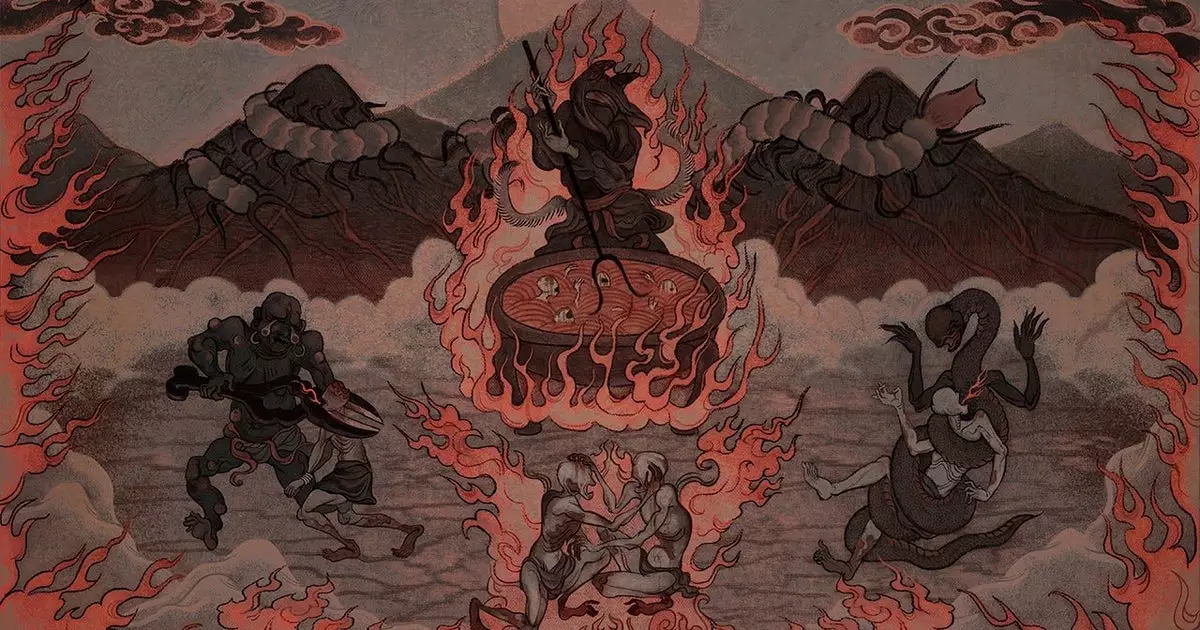Labyrinth Of The Demon King invites players into a visceral journey through the grit and shadows of mythic feudal Japan. The game is a daring ode to the horror genre, blending elements of atmospheric dread reminiscent of masterpieces like Silent Hill and the psychological intensity of Amnesia: The Dark Descent. But instead of mere homage, this title plunges into the heart of terror, offering a compelling and simultaneously grotesque experience that leaves you in a state of both repulsion and fascination.
At its release, the game showcased a world where squalor and fear palpably coexist. The ambiance is steeped in a gothic mystery, set against a backdrop of whispered secrets and lurking terrors. Gamers navigate a haunting landscape, where every corner may hide a new threat, or perhaps, unveil an even deeper horror lurking in the shadows.
Grim Survival in a Desolate Realm
In this labyrinthine nightmare, the objective is clear yet daunting: track down and eliminate a menacing yokai boss responsible for the fall of your lord. Yet the journey is marred by a surreal sense of impending doom, accentuated by the game’s disturbing inhabitants—unsettling creatures that embody the fear of the unknown. As you traverse abandoned abodes filled with grotesque fungi and malevolent beings, the boundary between predator and prey blurs.
Equipped with meager resources—a shabby broken katana, dubious medical supplies, and a bottle of sake—the player’s initial foray into this dark labyrinth is fraught with tension. The act of scavenging for useful items becomes both a lifeline and a source of dread, as each discovery might lead to a moment of respite or an encounter with terrifying foes. The ludicrous concept of needing to rescue a blacksmith to fix your weapon serves as a grim reminder of the hopelessness that permeates this universe.
Combat That Defies Comfort
The stamina management in combat draws comparisons to the early King’s Field RPGs by From Software, yet it injects a fresh layer of apprehension into every confrontation. The chaotic ballet of combat seems to fluctuate between empowerment and impotence. Bundling together monstrous foes who are as intent on harming each other as they are on targeting you creates a frantic atmosphere, eliciting an instinctive survival response.
Your best-laid plans to combat the disfigured antagonists can unravel in an instant. The ability to kick enemies, while useful in breaking their defenses, may inadvertently cast them beyond reach, leaving you with only a broken weapon and a world of regrets. It’s a compelling yet infuriating mechanic that reinforces the game’s overarching theme of fragility and uncertainty.
A Deteriorating Aesthetic
The game’s graphic presentation, with its deliberate low-fi aesthetic reminiscent of the early PlayStation horror landscape, fosters an unsettling nostalgia. The dithered textures, unrefined sound design, and clunky controls may not appeal to every player, but they provide an authentic essence of terror—a rotting dream that feeds on the innocence of our past gaming experiences.
Navigating through the treacherous halls elicits a familiarity with the genre’s hallmarks: unnerving cutscenes, questionable camera angles that impair spatial awareness, and an overwhelming sense of isolation accentuated by the ominous soundscape. While traversing this world might feel like looking through a dirty window into depravity, it is precisely that murky lens that cultivates a unique, immersive horror experience.
Volatile Exploration and Intricate Design
The exploration mechanics deserve significant praise. Players are compelled to delve into every nook and cranny, uncovering secrets while managing the dread that creeps in with each step. The precariousness of investigation is punctuated by the effective use of save points, inviting players to weigh their desires to uncover more horrors against the high stakes of potentially losing progress.
However, the absence of a fresh save system from the demo to the full game poses a significant critique. Encountering setbacks can be frustrating, particularly in such a tension-laden atmosphere where every choice is consequential. Yet, perhaps this decision was deliberate—to enhance the game’s underlying message: nothing is free in the labyrinth of despair.
Embracing the chaos and horrors encountered in Labyrinth Of The Demon King could lead to a fresh perspective on horror gaming, perhaps even establishing it as a cornerstone for future narratives within this genre. The experience is not for everyone; but for those brave enough to wander into its depths, it offers an unparalleled dive into a world where every corner may just hide a deeper dread.


Leave a Reply